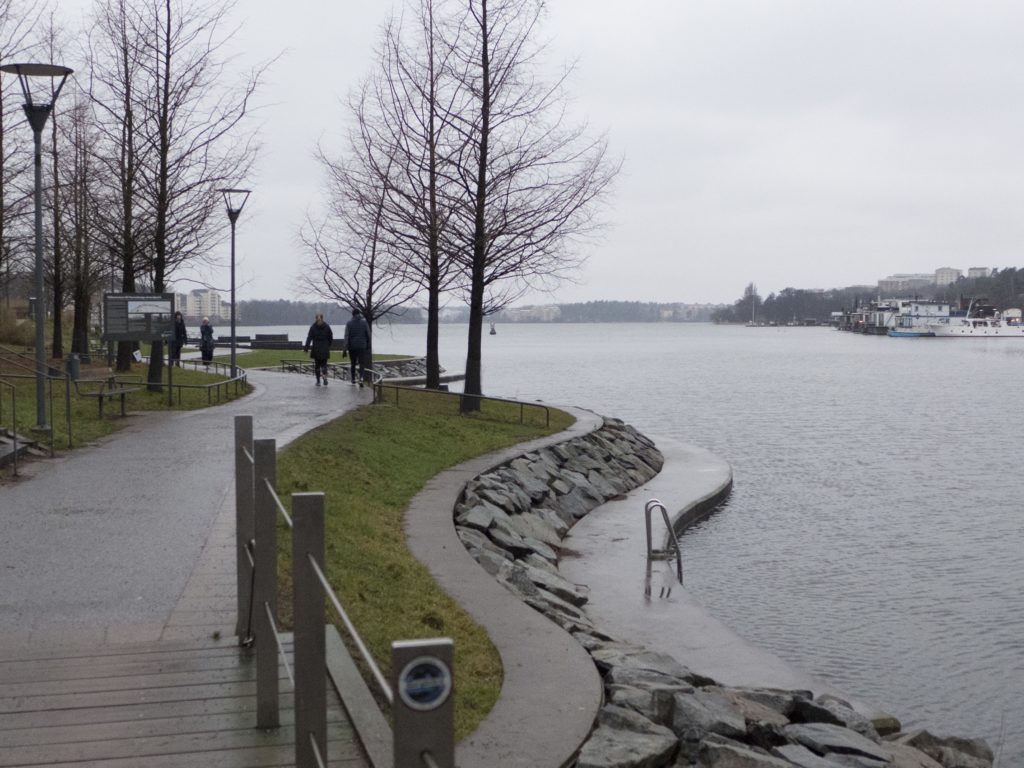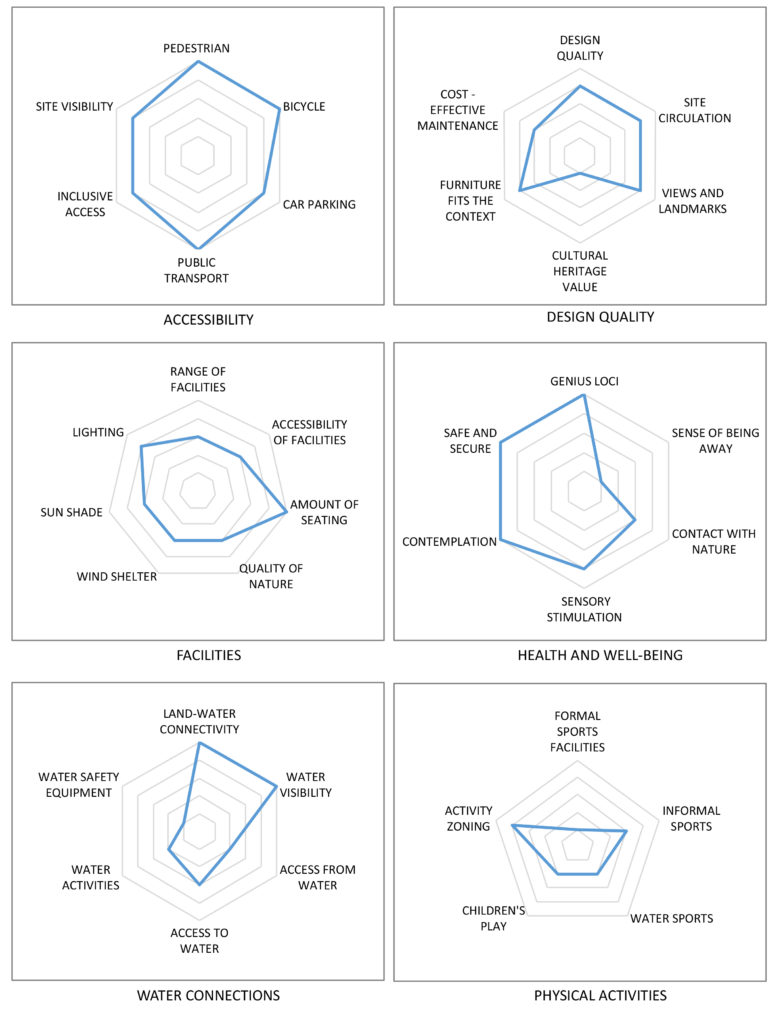
Architect
Nyréns Architects
Type of Area
Backwater
Land/water interaction
Embankment
Bridges
Pier
Built Environment Types
Highly built
Low green
Scale of Impact
Block
District/neighbourhood
City
Intervention Scale (Spatial)
Linear development – multiple sites
Project Types
Riverfront development
Public space regeneration
Outdoor recreation
Urban/ Rural
Inner urban area
Visibility and Openness
Fully enclosed
Fully contained view
Down by the river
Hornsberg is situated on the western side of Ulvsundajön in the Stockholm archipelago in Sweden. Its orientation means that it is bathed in the evening light of the setting sun. The project consists of a 700m long winding waterside pathway on reclaimed land, that allows access to the water via a riprap bank with ladders down into the water at regular intervals. Three floating piers of different lengths project to take advantage of the light on the water. Pilings driven into the solid rock and bonded to the surface with a large concrete crown extend the area of green space.
It is a popular spot, especially on hot summer days when nearby residents go to the park for a barbecue, to swim or just have contact time with the water. Tanks of water heated by the sun provide showers for those who use the park for exercise. The aim was to create an outside living room, and so there is ample informal seating. Similarly, the non-native vegetation was not intended to look like a garden, so it is deliberately of an informal design. Trees and underplanting are placed in dense groups to provide shade and a space between groups or users for events and functions.
The far eastern end of the park has been rebuilt to improve accessibility by raising the former plaza surface and providing access to the buildings at street level. It also includes the Moa Martinson’s square, a park dedicated to the radical, feminist author where large granite slabs have been engraved with quotes from her books. A lilac arbour emerges from the stairs inspired by the author’s choice of motifs and the differences in levels provide a seating-friendly wall. The lower paths provide direct contact with the water and access to the piers; however, these are not accessible to pushchairs and wheelchairs so these users have to gain access to the park via the western end, where it is at the same level as the road.
Perception and Meaning
Legibility
Sense of place
Accessibility
Place attachment
Health and Wellbeing
Place affordance
Increased physical activities
Increases socialisation
Interaction with Water
Visual
Tactile – partially in water

Website of the project:
https://www.nyrens.se/projekt/hornsbergs-strandpark/ [Swedish]
Google map reference
The project scores well on accessibility as the reclaimed park has created various cycle and pedestrian pathways well connected to the city streets and transportation network. It scores low on inclusive accessibility as access to the water’s edge itself by those with motility is poor.
The modular furniture, piers and decks at various levels all provide the site with ample seating and so this aspect is rated highly. Although the provision of facilities themselves are low, these will be in easy reach of the site due to its city-centre location. This city-centre location, overlooked by apartment buildings, means, however, that contact with nature and a sense of being away are low, which is only to be expected in a busy location.
Lighting is adequate and the water visibility high. Access to and from the water, however, is not easy due to the steep riprap embankment and ladders into the water, and so this scores low.
